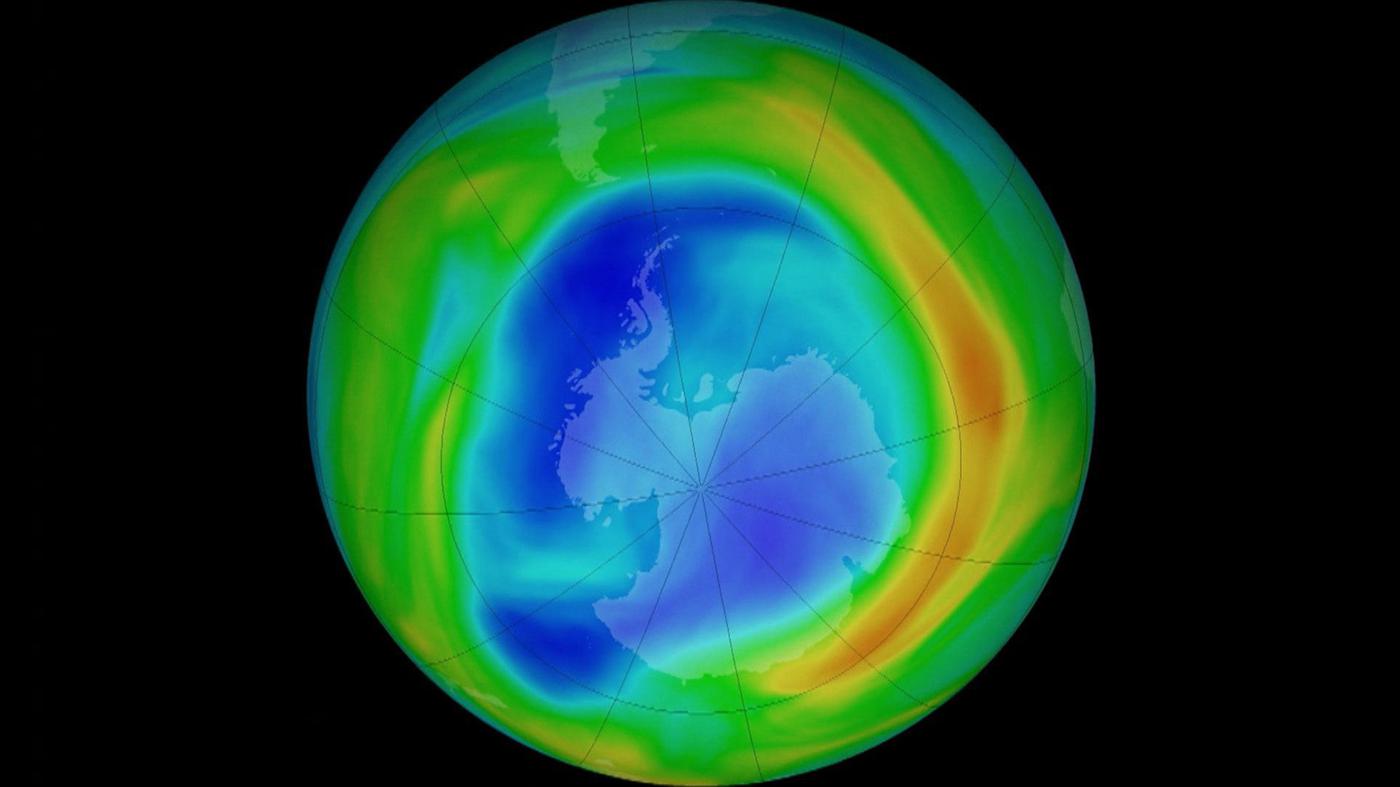According to current forecasts from the Copernicus Atmosphere Monitoring Service (CAMS), an unusually large ozone hole is expected to occur over Antarctica in early December. This year, according to CAMS data, the ozone hole formed a few days earlier than usual, and has remained stagnant rather than retreating over an area of just over 15 million square kilometers since the end of October. The observed expansion is expected to continue through the first week of December, CAMS scientists said Thursday.
The Antarctic ozone hole is an episodic event caused by ozone-depleting substances that begins in mid-August under normal conditions and continues to shrink through November.
Unusually early
However, the ozone hole over the Southern Hemisphere this year showed an unusual onset with earlier expansion, according to Copernicus. At its annual peak in mid-September, a total area of 26.15 million square kilometers was measured, the sixth largest area since satellite measurements began in 1979. Although the area of the ozone hole typically decreases during early October, it increases again toward the end of month, and remained at about 15 million square kilometers.
The ozone hole’s unusual three-year longevity has been observed: Since 2020, the ozone hole has been closing significantly later than usual, in mid-to-late December.
High temperatures
Scientists believe that the situation this year in the Southern Hemisphere is primarily due to above-average temperatures in the stratosphere and the strong polar vortex that persisted until December.
They have identified several possible drivers for the observed strengthening of the polar vortex, but these still need further research, such as water vapor entering the stratosphere from the eruption of the Honga Tonga volcano, changes in wind patterns in the Southern Hemisphere and climate change.
Decreased by a quarter
Over Antarctica, the ozone layer may not recover as expected in recent years, researchers wrote in a recent study. In the specialized magazine “Nature Communications”.. The concentration of gas at the center of the ozone hole over the southernmost tip of the continent has fallen by a good quarter in the October months since 2004. The ozone hole also occurs later in the year and closes later than in previous years.
Recommended editorial content
Here you will find external content selected by our editors to enrich the article with additional information for you. Here you can view or hide external content with one click.
I agree that external content can be viewed to me. This means that personal data may be transferred to external platforms. You can find more information about this in Data Protection Settings. You can find them at the bottom of our page in the footer, so you can manage your settings or revoke them at any time.
For their work, the researchers analyzed daily and monthly fluctuations in ozone concentrations between 2001 and 2022 at different altitudes in the stratosphere. They cite changes in the dynamics of the mesosphere, the atmospheric layer above the stratosphere, as a possible cause: In addition to ozone-depleting substances, climate change also affects the ozone layer.
Recovery is still expected
However, scientists who were not involved in the study do not see this development as jeopardizing the long-term recovery of the ozone layer and the impact of the ban on hydrofluorocarbons (CFCs) in the Montreal Protocol. For Ulrike Langmeatz, head of the Atmospheric Dynamics Working Group at the Institute of Meteorology at the Free University of Berlin, the study does not provide any clear evidence that the ozone hole will become larger again in the future.
On the one hand, the study – like other studies – shows a significant recovery of the ozone layer in September, which is generally explained by a decrease in ozone-depleting substances. On the other hand, the study’s authors point out – also in agreement with other studies – that there could be several possible causes for the large ozone holes in recent years. “Therefore, we cannot conclude from the study results that the ozone hole will become larger again in the future,” Langmatz told Germany’s Science Media Center (SMC).
It is not yet clear why the last three years in particular have been so marked, stresses Sabine Bischoff of the Helmholtz Center for Ocean Research in Kiel (GEOMAR). Aerosols from volcanic eruptions and bushfires in Australia may have contributed
© Image Alliance/DPA/NASA/EJSTEIG
Regarding the impact of climate change, Martin Dameris from the German Aerospace Center told SMC that outside the polar regions, climate change is known to have a positive impact on the ozone layer. But in the winter stratospheric polar vortex – where strong ozone depletion occurs – the situation may be different, as the current study shows. “These additional processes make it difficult not only to clearly detect but also to predict the pace of future recovery.”
Physicist Dameris firmly believes that the ozone layer will be completely replenished around the middle of this century, as the World Meteorological Organization (WMO) also predicts. The chlorine content from CFCs remains high. But since the mid-1990s, there has been a decline of about twelve percent. “So: The Montreal Protocol to protect the ozone layer is working. But it still takes time.”
Impact of climate change
But what remains open is the question of how the ozone layer will develop under conditions of climate change, that is, in an atmosphere containing higher concentrations of greenhouse gases. “There are still some questions to be clarified here, including possible changes in atmospheric dynamics.” Climate change is an important element to take into consideration.
One of the important findings of the study is that the minimum level of ozone in the ozone hole is getting closer and closer to summer if meteorological conditions are suitable, says Christoph Brühl of the Max Planck Institute for Chemistry in Mainz. The risk from increased ultraviolet radiation to plants, animals and humans temporarily becomes greater: “This is also possible near the North Pole,” says the researcher.
In 1987, the United Nations adopted the Montreal Protocol, which obliges all countries to take the necessary measures to protect the ozone layer. As a result, emissions of ozone-depleting substances have continuously decreased. For this reason, researchers initially assumed that the ozone hole would close completely by about the middle of the 21st century.
However, studies in recent years suggest this could take about 30 years longer due to increasing dichloromethane emissions – particularly in China – which are not included in the Montreal Protocol because they are short-lived. There are also emissions from large-scale forest fires.

“Tv expert. Hardcore creator. Extreme music fan. Lifelong twitter geek. Certified travel enthusiast. Baconaholic. Pop culture nerd. Reader. Freelance student.”







More Stories
Shooting stars from Eta buckets on the way | tagesschau.de
Horsehead Nebula close-up – new images from the James Webb Telescope
Reducing silent inflammation in the body with food